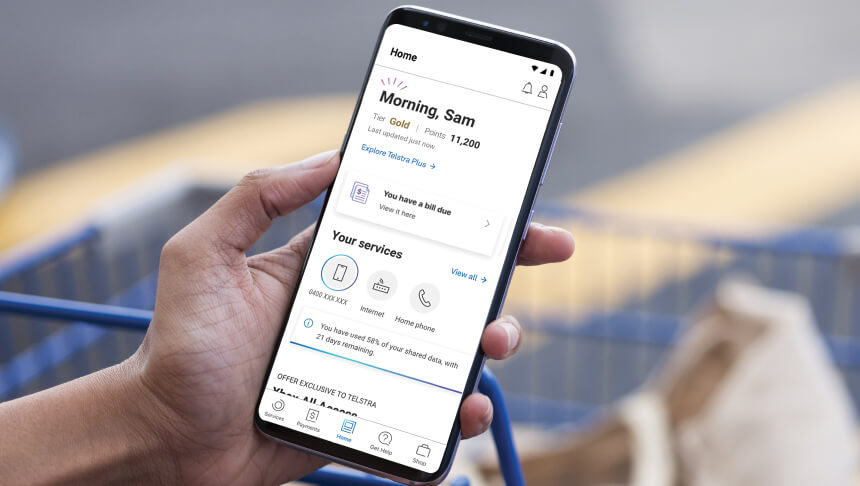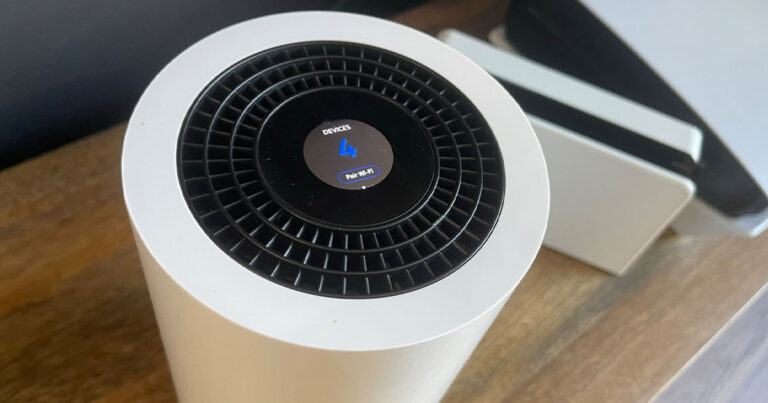How to troubleshoot and fix Telstra internet issues
There are times when you may need to contact Telstra live chat or technical support for Telstra internet issues, but there are troubleshooting steps you can do first.
Please note that while these troubleshooting steps are specific to Telstra NBN connections, a lot of the advice below is applicable to other forms of Telstra broadband internet.
How fast is your internet?
First thing's first. If you're experiencing slow internet speeds on Telstra, you need to identify what type of broadband plan you are on (e.g. ADSL, home wireless, mobile, or NBN) and what the expected speeds are on that plan. Telstra currently offers plans on four speed tiers NBN 25, NBN 50, NBN 100 and NBN 250. On those plans, Telstra suggests you can expect typical evening speeds of 25Mbps, 50Mbps, 100MBps and 250Mbps, respectively. Internet speeds are sure to fluctuate but those are the speeds you should expect your connection to targer depending on your plan.
Once you've check which plan and speed you're paying for, run a speed test on your Telstra plan and compare the results with the speeds listed above to see whether you are getting what you're paying for.
If it's not quite up to speed, you might consider reviewing NBN plans from other NBN providers with comparable speeds. Here are some of the most cheap NBN plans with speeds of 50Mbps or more.
If you've got fast NBN and a great modem but you're still left wondering why your internet is slow, check our guide for some useful tips.
Telstra NBN outages check
There are some basic Telstra troubleshooting steps that the provider advises you to try before contacting them for technical support.
First, check the dedicated Telstra outages page to check the Telstra service status. Bear in mind that just because there isn’t an outage reported, it doesn’t necessarily mean there isn’t an outage: it takes time and, sometimes, enough people reporting issues for an outage to show up on this page. It’s also worth checking NBN’s Network outages page for any current outages or upcoming maintenance.
At this stage, if you are having Telstra internet problems and a network outage is reported on either of these pages, you have to wait for either Telstra or NBN to fix the issue.
If no outages are reported and your internet still isn’t working, Telstra advises you to use its Smart Troubleshooting Tool for guided advice. You’ll need to use a Telstra ID to access this service, but it runs automated tests to help solve your problem. If the tests don’t work, using this tool puts you ahead of the queue for speaking to someone about additional troubleshooting steps.
Alternatively, you can use the My Telstra app for assistance by selecting the ‘Get help’ tab, picking your Telstra service, then selecting the ‘Get help with an issue’ option. Just follow the prompts from there. There’s also a ‘Support’ tab on the Telstra 24x7 app.
It’s worth flagging that you may be eligible for account credit if your Telstra service has been impacted by an outage or service disruption.

Telstra NBN technology limitations and alternatives
At the end of the day, there is a long list of factors that can impact fixed-line NBN speeds that are simply out of your contol. This is particularly true for FTTN (Fibre-to-the-Node) connections which are know to suffer slow speeds due to line degradation or distance from the exhange. Those living in apartment buildings can also have a tough time diagnosing FTTB (Fibre-to-the-Building) connections, particularly in older brick buildings.
But there's still hope for your internet yet. An increasingly viable NBN alternative is 4G or 5G Home Wireless. These plans are more comparable to old mobile broadband plans, except with a lot more data (sometimes unlimited) at a more affordable price.
Here's a glance at some of the most cheap 4G and 5G Home Wireless plans on the market.

How 5G Home saved me from an NBN nightmare
After twelve months of tech support and switching providers, Optus 5G Home solved my broadband troubles in a matter of hours.
Troubleshooting the Telstra Smart Modem
These days, Telstra NBN services bundle in a preconfigured Telstra Smart Modem (Gen 2 is the current iteration). This networking device includes a preinstalled and preactivated Telstra 4G SIM card as a backup internet connection in the event of an NBN network outage (with speeds limited to 25Mbps download and 2Mbps upload).
Despite the name, this networking device is actually a modem-router (not to be confused with a standalone modem or standalone router), which means it handles both internet connectivity and networking around your home.
You can use the Telstra Home Dashboard app to view connected devices, test your Wi-Fi coverage, set parental controls, connect guests, and run a speed test on your Telstra internet.
Telstra advises that you leave the Telstra Smart Modem on at all times, partially because firmware updates are installed automatically.
You can log in to the Telstra Smart Modem Gen 2 with a username and password which, by default, is ‘admin’ for the username and ‘Telstra’ for the password. Should you wish to tweak other settings like the Domain Name Server (DNS) settings, Telstra has a list of its state/territory-based DNS settings here.
One of the best ways to determine the cause of your Telstra internet issues is to take a closer look at the Telstra Smart Modem lights.
Understanding the Telstra Smart Modem front lights
While there’s no official online Telstra Smart Modem manual, there are lights to help troubleshoot. The front LED on your Telstra Smart Modem communicates basic network activity with different coloured lights. If the LED is off, the power is off. If the power is on and the light isn’t on, there’s likely something wrong with the Telstra Smart Modem and you should contact Telstra live chat or call them.
Here’s what each of the seven colour states of the front LED light means:
- Green: Normal network activity.
- Blue: Mobile network activity (4G backup).
- White: Powered on and booting up.
- White (flashing): The firmware is automatically upgrading. Don’t power off if you see this.
- Orange: The Telstra Smart Modem has finished booting and is trying to connect. Alternatively, the NBN connection is lost and the Telstra Smart Modem is trying to connect to the Telstra 4G mobile network.
- Red: The NBN connection and Telstra 4G have failed to connect.
- Colour cycling: The Telstra Smart Modem has been factory reset.
For a red front LED light, contact Telstra technical support.
Telstra Smart Modem rear lights
Online light
The four colour states of the Online light are:
- Green: Fixed or mobile internet is online.
- Orange: ADSL captive portal (for new user accounts).
- Red: PPP authentication failure (username/password error).
- Off: Fixed and mobile internet are offline.
For orange and red lights, ensure you have the correct username and password details entered into the Telstra Smart Modem. If the problem persists, contact Telstra technical support. If the Online light is off, also contact Telstra technical support.
WAN/DSL light
The four colour states of the WAN/DSL light are:
- Green: Either Ethernet is connected or digital subscriber line (DSL) is synced.
- Green (slow flash): DSL has started syncing.
- Green (fast flash): DSL is finishing syncing.
- Off: No NBN internet connection.
If this light is off, check the Telstra and NBN outages pages. If nothing is reported on the Telstra or NBN outages pages, and if the Telstra Smart Modem hasn’t switched over to 4G backup internet, contact Telstra technical support.
Mobile Mode light
There are only the two colour states of the Mobile Mode light:
- Green: Mobile internet is online.
- Off: Mobile internet is offline.
Note that off in this instance is only a sign of an issue if the Online light (above) isn’t on at all. If both Online and Mobile Mode lights are off, check the Telstra and NBN outages pages. If there’s no outage reported on either, contact Telstra technical support.
Mobile Signal light
The four colour states of the Mobile Signal light are:
- Green: Good signal strength.
- Orange: Okay signal strength.
- Red: Poor signal strength.
- Off: Telstra mobile network is unavailable.
A red light, in this instance, isn’t a sign of an issue; it indicates the Telstra mobile signal strength that’s being received by your Telstra Smart Modem. If the Mobile Signal and Online lights are both off, contact Telstra technical support.
- Not with Telstra? Troubleshoot just about any NBN issue
- Do you have a modem or a router? Find out what the difference is
- Is it time to upgrade? Check out our recommended modems round-up
Phone light
The Phone light will be different based on whether you’re using a VOIP handset or no handset at all. As this isn’t an important part of your internet connection, contact Telstra technical support if you have any questions.
Wi-Fi light
The Wi-Fi light is either green or off: green indicates WiFi is on and no light means WiFi has been turned off. Be aware that this light is also a button, so if you notice it’s off, press it to get the green light back (otherwise your Telstra Smart Modem won’t be capable of WiFi connections).
Pair light
This light is related to VOIP handset and not internet connectivity. Contact Telstra technical support if you have any questions.
Fixed Wireless connection box lights
If you have a Fixed Wireless NBN internet service with Telstra, NBN will have installed a Connection Box in your home, which acts as a modem. It has different lights to the Telstra Smart Modem.
Power light
Green means on and off means there’s no power. Ensure that the power cable is correctly connected and the power is switched on at the wall.
Status light
You want to see a green flashing light, as solid green means the connection box is in test mode. A flashing amber light means the device is starting up and installing, while red indicates a system fault. If you see a red light, power cycle the Connection Box.
Power cycling is done by turning off the Connection Box power at the wall, waiting 20 seconds, then turning it back on. After one to two minutes, you should see a solid green light for Power, flashing green for Status, solid or flashing green for ODU, and either a red, amber or green light for Signal.
If power cycling doesn’t fix your Telstra internet issues, contact Telstra technical support.
ODU light
ODU is short for ‘Outdoor Unit’. Solid green means the ODU is online, while flashing green is indicative of activity. A flashing red light means there’s an error, while a solid red light means the ODU is offline.
Follow the steps above to power cycle the Connection Box. If the internet isn’t back after a couple of minutes, contact Telstra technical support.
Signal light
The three colours you can see for Signal are all indicative of signal strength. Green means high signal strength. Amber means medium signal strength. And red means low signal strength which, even though it’s a red light, doesn’t mean there’s an error.
Other Telstra networking devices
If you have an earlier Telstra Smart Modem (not Gen 2) or a Telstra Gateway Frontier, you can find out more about what the lights mean on this Telstra support page. In simple terms, critical lights that are off or red are indicative of errors that you should speak to Telstra technical support about.
For additional troubleshooting steps, check out our comprehensive guide to determining the cause of your Telstra internet outage.
Related Articles






